Even though all electric mountain bikes come with various assist settings that can be changed on the fly, not everyone uses them to their full potential. It’s not uncommon for first-time users to just put them in Boost, Turbo, Ludicrous, or whatever the highest setting is called and enjoy the speed. Others intimidated by the powerful assist may just use the lower settings.
But with time, most riders figure out what works best for them and their local trails. More advanced users utilize the modes out of necessity and for better riding techniques. Some systems are tunable, so you can tweak each setting to your needs. In contrast, others utilize a combination of complex algorithms and sensors paired with more on-the-fly adjustable mode options.
How Systems Maximize The E-Mountain Bike Experiences
In addition to a system overview, we contacted some well-known eMTB riders for their advice on getting the most out of the most popular systems on the market.
Shimano
Shimano’s EP8 system offers four assist modes: Walk, Eco, Trail, and Boost. The system may only offer four modes, but it makes up for it with one of the most tunable systems on the market. Every Shimano STEPS manufacturer programs slightly different power output settings that they think are appropriate for the bike’s intended use. Users simply download the E-Tube app and pair it with the bike’s system via Bluetooth to customize these settings. This app offers more tuning options than manufacturers with the older E8000 system. Within that app, you can raise or lower the assist level of Eco, Trail, and Boost. You can also tweak maximum torque assist and assist start (how quickly the motor responds when the rider first pushes on the crank). Two mode profiles can be toggled via the display to quickly swap preset combinations.
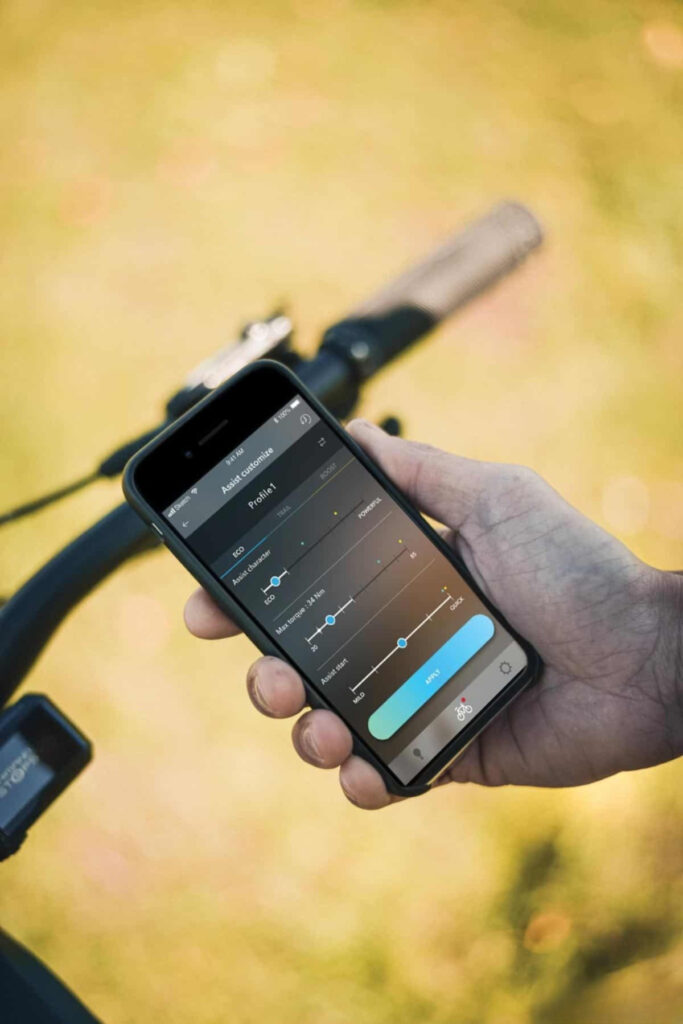
Mountain bike pioneer, racer, and current Shimano Skunk Works rider Joe Murray offers his advice on EP8 system use and tuning:
Eco: “Many riders like to use Eco as the preferred power-assist mode for more casual, fun, bike-path city riding. I know a couple in their mid-70s who are long-term, experienced mountain bikers. They put in a lot of miles, most of that in Eco because they can go farther and are not out for aggressive riding.”
Trail: “This is the assist power mode that we engineered to be used 80–90% of the time for performance eMTB riding. It covers the widest range of assistance for most conditions.”
Boost: “Boost is obviously when max power is needed, usually for steep uphills. Enduro racing is usually all Boost, permitting battery swaps, especially for power stages.”
Tuning: “The factory settings are sometimes a good place to start, yet I think all riders can benefit more from custom tuning the assist power modes. The idea is to get each mode to complement the other more effectively. I think most riders who want to tweak the settings and are more experienced will want to set the Assist Start to Level 5. More experienced riders can react to the quicker power better. Heavier riders will want quick Assist Start, and lighter riders will likely want more Mild Assist Start.”
Rocky Mountain Powerplay
Rocky Mountain’s new Powerplay 4.0 system has five assist modes: Walk, Eco, Trail, Trail+, and Ludicrous. It comes from the factory set with the following percentages of assist: Eco 25%, Trail 45%, Trail+ 75%, and Ludicrous 100%. Each of these settings is tunable using the display and control switch on the bike without needing an app. Each mode is infinitely tunable within the limits of the system. For example, you could make Eco as powerful as Ludicrous or vice versa. In the operating system, riders have three tune settings: Factory, Tune A, and Tune B. The Factory setting cannot be changed, but tunes A and B are fully customizable. In addition to assist percentage, you can adjust Boost, which is the manner in which the power comes on with pedal inputs.
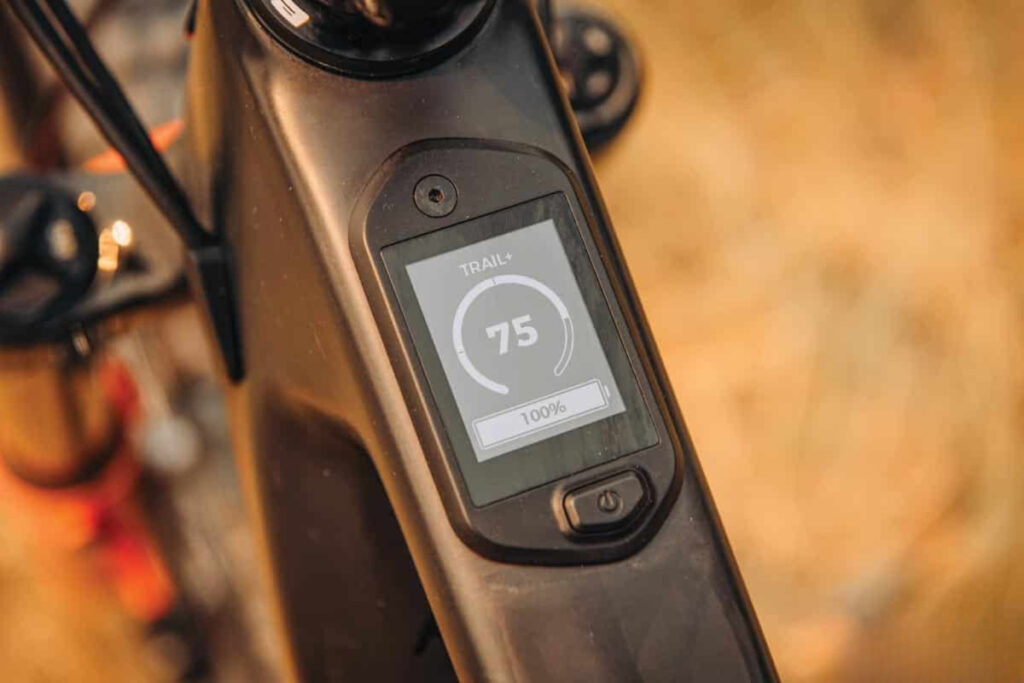
Rocky Mountain’s freeride ambassador and the “Godfather of Freeride” Wade Simmons, is a regular eMTB rider. Here is how he utilizes and tunes the Powerplay 4.0 system.
Eco: “Having now been riding e-bikes for four to five years, I have finally learned to really enjoy Eco mode. What I have experienced with riding e-bikes is at first riders are obsessed with the power and spend most of their time on Max Boost or Ludicrous. I refer to this as being ‘drunk on power.’ Once the ‘drunk’ wears off, people seem to settle into using less Boost all the time. For me, Eco mode is most enjoyable on rolling technical singletrack, the type where you have to work hard to carry momentum. And once you do go a little faster, the trail seems to get smoother — kind of like driving over a cattle guard. Also, Eco mode is used often when the ride group is varied in skill and fitness, so a rider in Eco can keep up with another who may be a couple of Boost modes higher.”
Trail: “As with gears on a bike, it is good to have options. For us at Rocky, the addition of two Trail modes— Trail and Trail+ — has been well-received. I would not say that I ride in the Trail mode often, but on a longer ride, and as the climbs vary in steepness, Trail mode comes in handy.”
Trail+: “Options are good,” says Wade. “I definitely find myself riding in Trail+ mode more than Trail mode. The climbs around the North Shore where I live tend to be steep and technical, and Trail+ mode works well for this. I guess if you wanted to compare modes to human performance, Trail+ would be like 75/80% of a full sprint. It would be the equivalent of the 200m or 400m run as opposed to the 100m, which, of course, would be the Ludicrous equivalent. Who’s sprinting around everywhere, anyhow? Why not go 80% and have almost as much fun?”
Ludicrous: “Ludicrous mode, of course, is described as 100% of engine power being delivered. And, as one would expect, Ludicrous mode is aggressive. I’ve found that in some situations, Ludicrous is too much, and in other situations, it’s the only mode that can help me clean a section of trail. To harness the true potential of Ludicrous mode, riders need to be quite skilled. There is a level of brake and pedal control that riders need to have mastered before they can expect to really tap into the potential of what is possible on an e-bike in terms of technical climbs, etc. Ludicrous mode for me is why I love e-bikes so much; they allow me to explore trails in a whole new manner, to explore terrain that otherwise would be a definite walk on a ‘muscle’ or ‘acoustic’ bike. My trail network has basically been turned upside down; what was down is now up. One wouldn’t believe it, but we here on the North Shore actually ride in a higher assist mode on the downhill because we want to carry speed and momentum into the jumps and gaps.”
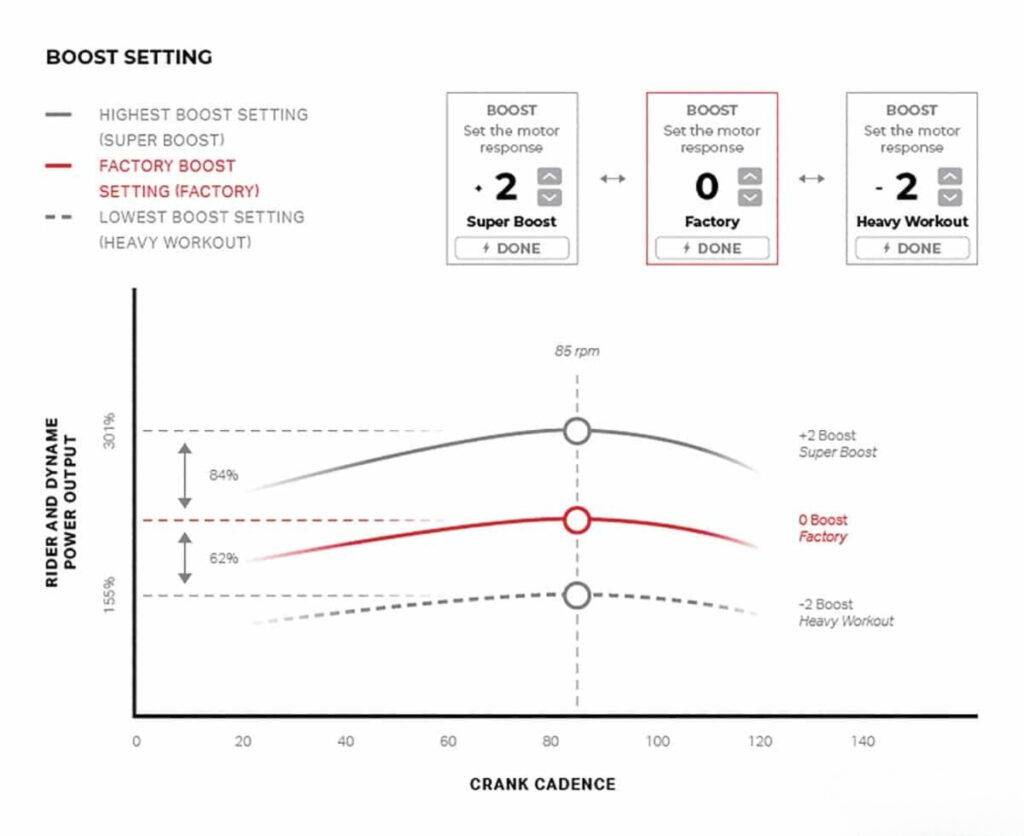
Tuning: “Tuning is useful because you can be more efficient with power consumption and such. Tune A can be set to keep power output low for long-distance needs, and Tune B can maximize power for a race or steep climbing. Also, riders can adjust power/torque gain in each mode. This will change the torque output (to drive) upon initial pedal rotation. This depends on whether a rider would like more initial power surge or less when engaging the cranks.”
Bosch
Bosch manufactures many different drive unit systems, but the Performance Line CX is the one you’re most likely to see on high-end eMTBs. Bosch offers a very wide range of mode options, six in this case: Walk, Eco Tour+, Tour, eMTB, and Turbo. Some of these modes are sophisticated enough to automatically adjust power output based on your input using complex algorithms.
Tour+ and eMTB modes automatically pick the mode in real-time 1,000 times per second based on your input. Tour+ starts with a lower Eco level of assist and requires more input from the rider than eMTB mode. eMTB mode spans from Tour to Turbo. Until recently, this system was not tunable by the end user, but with the introduction of the new Smart System, some 2022 Performance Line CX units will be tunable via Bosch’s new eBike Flow app. Within the app, riders can customize their riding experience by adjusting Eco, Tour, and Turbo mode assistance levels, power dynamics (how quickly the power kicks in), max speed, and max torque. Dynamic assistance modes – Tour+ and eMTB – are not customizable.
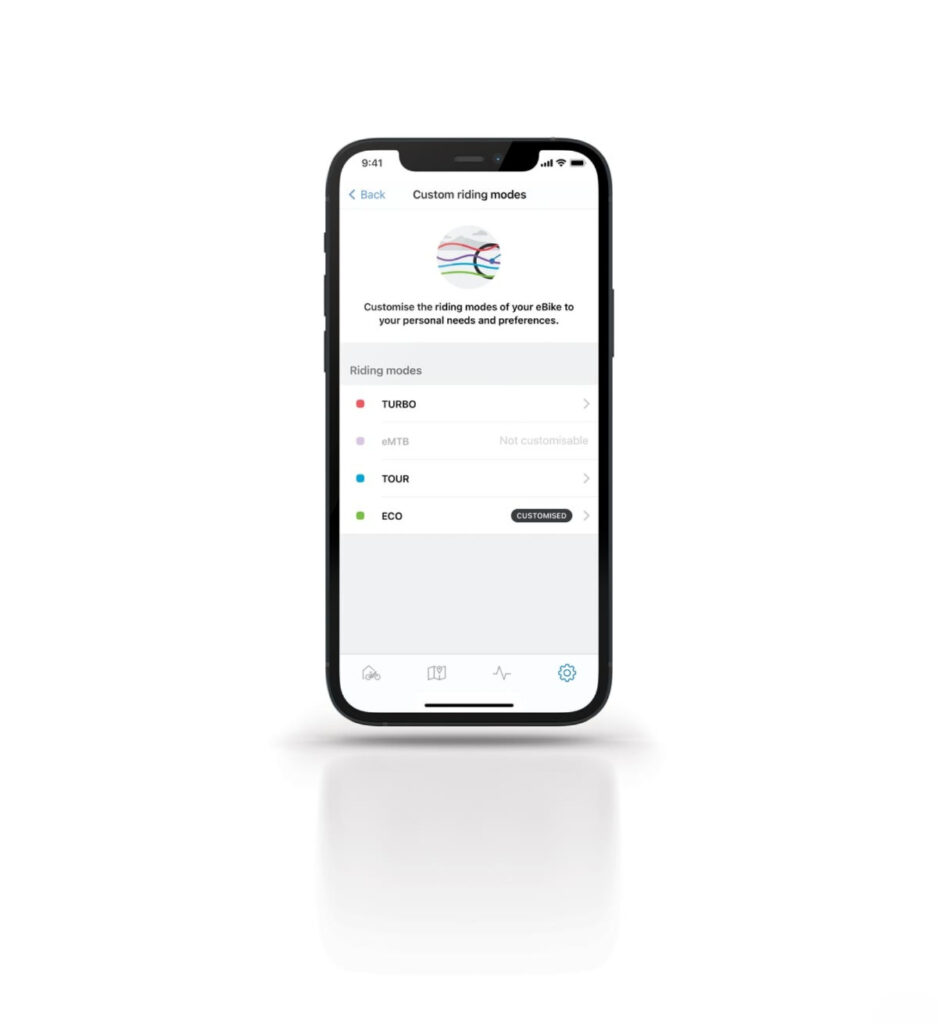
Mark Weir has been a long-time Bosch ambassador and shares his thoughts on the system’s mode use.
Off: “I ride with the assist off when I’m thinking about range anxiety and the future on really big rides where I know I’m gonna go deep. Other times I’ll ride with it off on some climbs just to make sure I really do some work, then finish the ride in the higher-output modes when I’m spent.”

Eco: “I use Eco on flatter trails to save battery or when I’m just noodling around, and I am almost always in Eco when getting to the trail. There are times when I climb really steep climbs in Eco, too, like when standing up like I used to ride on a regular bike in the big ring. It has that same feel, but even a little harder. I sometimes use Eco on technical trails with steep switchbacks, because it’s more manageable and less sensitive to inputs.”
Tour: “If it’s flat terrain, I’ll use Eco all the way to the trail. And then when I get to the trail, as soon as I start climbing, I use Tour mode because it’s just a comfortable mode that offers really good range.”
Tour+: “I just recently had my bike’s system updated with the latest software, so I have not used Tour+ much at this point.”
e-MTB: “e-MTB just has more range than Turbo. The sensor system picks up the pressure you put into the cranks and gives what you actually need for the conditions you’re currently in, and it does this instantly. It also has a better range of acceleration, like just light support while getting through a technical spot. I probably use eMTB mode the most while descending. Most of the time, I think you’re probably better off in eMTB mode than Eco when tackling downhills once you get used to the power of the system.”
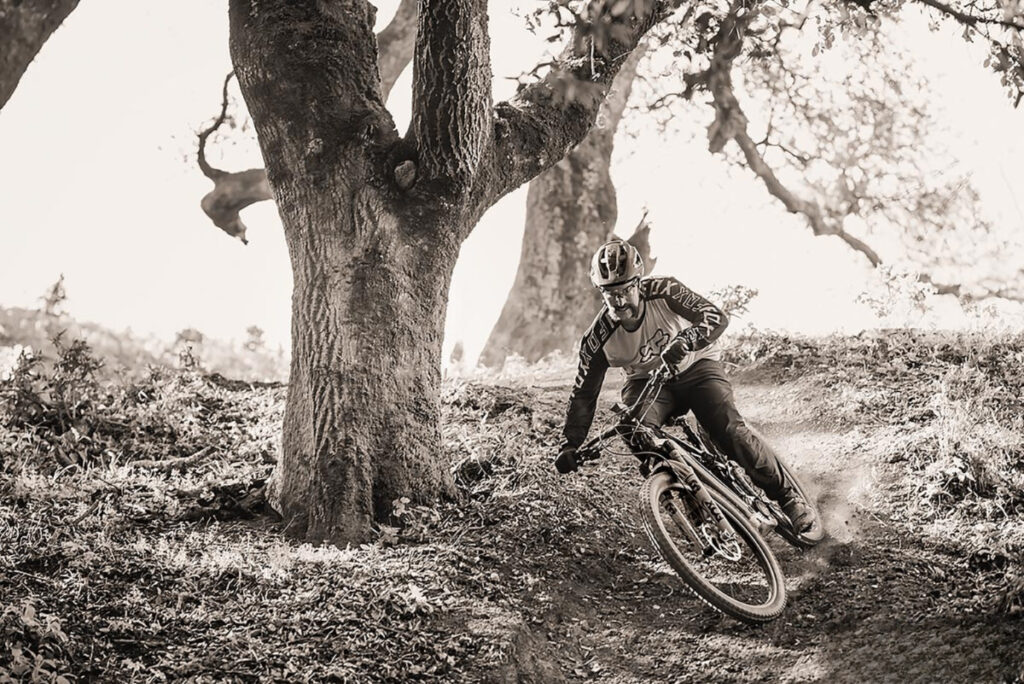
Turbo: “Turbo mode is for time travel, like when you actually don’t have time, and you need to travel fast. It gets you up the mountain faster, but it’s still probably not as fast as I was when I was actually super fit. I could probably go faster then, but it definitely gets you up and around. I like using Turbo in traffic, too, because people are stupid and texting. So, I like to have the highest mode when I’m in a traffic situation so I can get the heck out of the way of the Prius driver trying to rear-end me. While descending certain trails, I’ll use Turbo because I like to have the snap out of the corners. I traditionally don’t like pedaling in the corners at all. I try to not do it. It just means you screwed up because most of our trails are gravity fed.”
Specialized
Specialized’s motor may be made by Brose, but its software and interface hardware are all made internally. Specialized’s Turbo system in its Levo, Levo SL, and Kenevo models offers four modes: Walk, Eco, Trail, and Turbo. These modes are highly tunable via Specialized’s Mission Control app. Within that app, you can tune the percentage of support (assist), peak power output, and acceleration response.
Specialized also offers an adjustable Shuttle setting that is cadence-based and gives more or less power depending on how fast you are turning the cranks. This is very different from torque-based power delivery. You can also name and customize preset combinations to quickly access a desired assist tune. The Mastermind TCU on newer models allows for micro-tuning on the fly in 10-percent increments with a remote button on the handlebar.
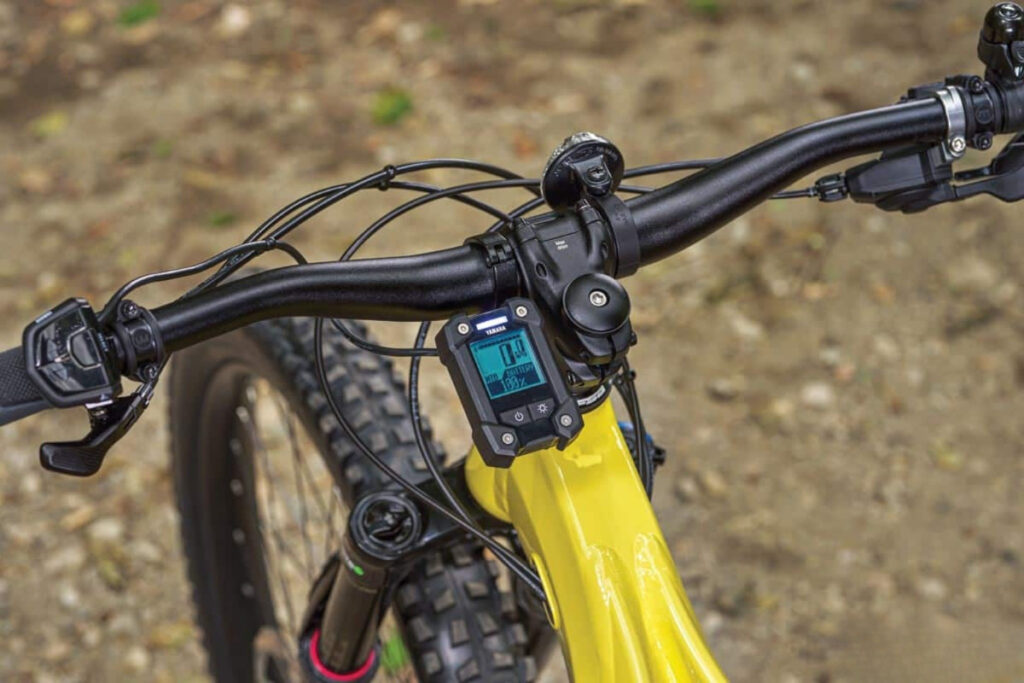
Enduro racer and Specialized athlete Curtis Keene regularly rides Specialized’s eMTBs. He offers the following advice on mode use and tuning:
Eco: “This mode is usually saved for a ride where I plan on going for three to five hours and want to get some good base miles in for training or just a massive ride where battery life is the concern. I always will start my rides with less assistance because I’m fresher, my legs feel better, and it’s good to get the blood flowing in the beginning. You’ll later on have more battery if you do it right. If you’re in a spot where you’re exhausted or need to finish quickly, Turbo or 100% it is!
“Also, if I’m on a downhill that’s super steep or a slower technical style of the trail, Eco is perfect because I don’t necessarily want that much power when on the steeps or tech stuff; it’s a little more manageable while descending.”
Trail: “By far, Trail is the most common mode I use while riding a Levo. Ups, downs; it’s a great balance between power, battery life, and getting a bigger ride in.”
Boost: “I use Boost when I’ve got one hour to ride and want to get in as many downhill laps as possible. But it is also great when you’re tired or just want to keep your heart rate low for recovery or spin. And, let’s be honest, it’s super fun as well!”
Tuning: “I used to tune the older-generation Levos, but with the new Mastermind TCU, I can adjust on the fly in 10% increments. So, 20, 50, 70, 80%, or whatever you want on the fly, can be chosen with the remote button on the handlebar. It’s also an easier way of managing battery on the fly. I weigh 200 pounds, and if I’m riding with someone who is 140 pounds, and they’re in Trail/50% mode, I’ll bump up to 70-80% to keep up a little easier and also manage battery life.”
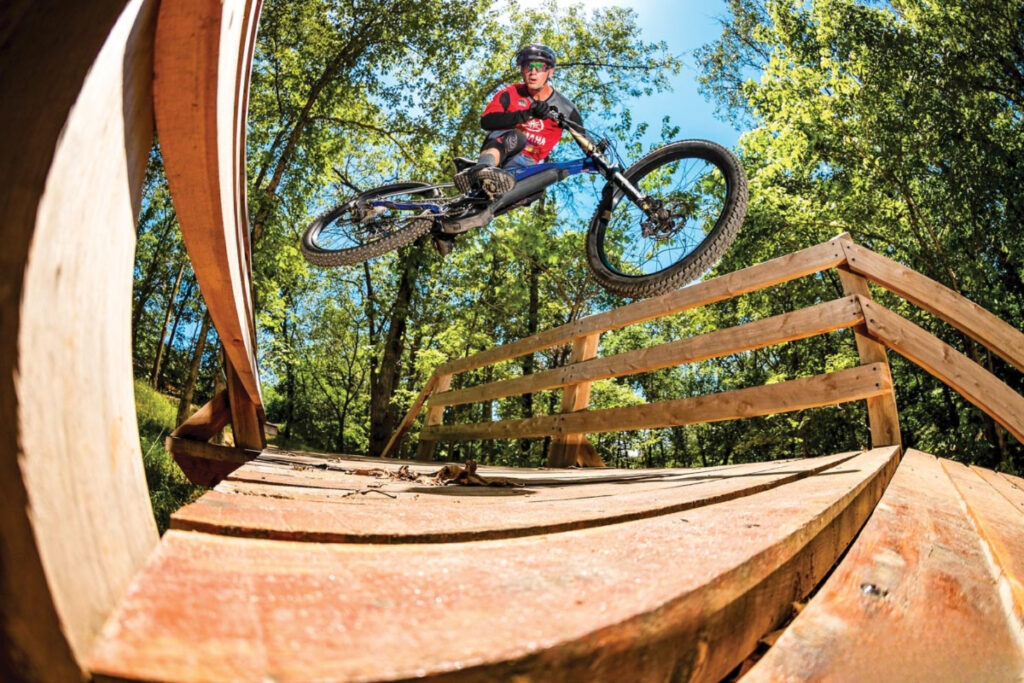
Yamaha
Yamaha YDX-Moro Pro and YDX-Moro models feature the PW-X2 drive unit, which incorporates an all-new sensor to recognize trail slope. The PW-X2 motor comes equipped with handlebar-remote, manually chosen modes that include Eco, Standard, High, MTB, and Extra Power. The MTB is unique in that it is designed to have more of a direct-assist feel to identically match the pedaling force of the rider while the other four modes are more predictive and reactive, resulting in a smoother transition of power. The automatic mode that’s made possible by the new slope sensor alternates through Eco, Standard, and High without rider input. While Yamaha supplies motors to many other manufacturers, such as Giant, everything beyond the motor is different. The mode offerings and tunability are completely unique to each brand.
Mountain bike race legend and Yamaha eMTB athlete Brian Lopes lends a little bit of his advice. It’s worth noting that he and Mark Weir were the only two animals who admitted to riding their e-bikes in the Off mode.
Off: “I ride with my motor off more often than I would have thought,” says Lopes. “I’d like to see how many miles I’ve ridden in each mode, but I would say that the Off mode would be in the top three for sure.”
Eco: “I’m not in Eco very often. For me, the mode is just there for those times when the battery is getting too low and I still want to ride with the assist mode on. I don’t know many people who run in Eco mode unless they’re limping home on a low battery and need to max out the range capacity.”
Standard: “Standard is my normal mode. I’m usually here. This mode is super smooth, and I could probably get away with just Standard and MTB modes, really. Standard is strong enough to feel like it’s really adding something to my ride, but I’m usually in MTB mode when we’re riding up stuff. It’s as powerful as the Extra Power mode, but it feels more like my own pedaling instead of feeling like the motor is trying to smooth out the power assist. For flowy downhill stuff, I’m in standard. I pretty much keep it between Standard and MTB mode.”
High: “High gets utilized in many of the same situations as EXPW or when I’m on wide-open fire roads. This mode is used anywhere I want to go fast, but without using EXPW to save a little battery.”
MTB: “MTB mode is what I use for anything technical, such as high-exit-speed switchbacks, wheelies, quick run-ups — anything where my pedaling and power need to be matched.”
Extra power: “I use EXPW (Extra Power) mode for max power on sections without any technical features. High and EXPW modes are usually what I use when riding the streets to the trails.”
Maximize Your Mountain E-Bike Experience
Mountain e-bikes are ideal for climbing the toughest terrains, mastering the most challenging climbs, covering greater distances, and hitting higher speeds.
Find out more about what makes mountain e-bikes so great and explore what the market offers with the best electric mountain bikes.
Find out more about what makes mountain e-bikes so great and explore what the market has to offer with the best electric mountain bikes.

